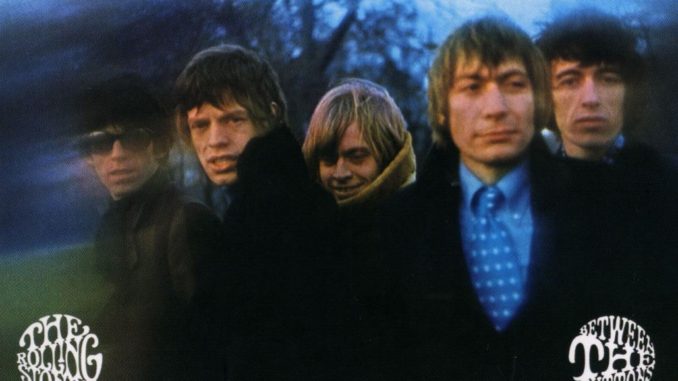
1967 was a very turbulent year for The Rolling Stones. In the career-spanning documentary 25×5 (1989), Keith Richards reflected on the year as a period with a lot of extracurricular goings-on which stole most of their attention.
Music unfortunately came second – but not by choice. Their reputation as public enemy #1 was simply catching up with them, and by early 1967, Jagger, Richards and Jones started being hounded by the press and authorities over their recreational drug use.
The three-part feature which ran in News of the World in early 1967 definitely didn’t help. It was entitled “Pop Stars and Drugs: Facts That Will Shock You”. The first article targeted Donovan (who was raided and charged soon after – totally by chance, of course); the second instalment (published on 5 February) targeted the Rolling Stones.
A reporter who contributed to the story spent an evening at the exclusive London club Blaise’s, where a member of the Rolling Stones allegedly took several Benzedrine tablets, displayed a piece of hashish and invited his companions back to his flat for a “smoke”.
The article claimed this was Mick Jagger, but this turned out to be a case of mistaken identity; the reporter had in fact been eavesdropping on Brian Jones. Two days after the article was published Jagger filed a writ for libel against the News of the World.
The newspaper, now out for blood, tipped the police off a week later on 12 February. This resulted in the infamous raid during a party at Keith Richards’ home. No arrests were made at the time, but Jagger, Richards and their friend Robert Fraser were subsequently charged with drug offences.
Richards said in 2003, “When we got busted at Redlands, it suddenly made us realize that this was a whole different ball game and that was when the fun stopped. Up until then it had been as though London existed in a beautiful space where you could do anything you wanted.”
On 10 May 1967, Jagger, Richards and Fraser were arraigned in connection with the Redlands charges. The police chose that very same monent to raid Brian Jones’ house. He was arrested and charged with possession of cannabis. This was war. Three of the five Stones now faced drug charges.
During this entire period, they kept making music as best they could. They were tired, worried, and found it harder to focus. Aware that the general public’s opinion could now be swinging against them, and that the police was demanding harsh sentences to make examples out of them, they nonetheless soldiered on. The albums Between the Buttons (January) and Their Satanic Majesties Request (December) would bookend the year.
The music released by the band in 1967 is, despite everything, very creative. There is probably not a single other year in the band’s history where they experimented more and tried more new things than they did in 1967. They made strides in their sound and many classic Stones tracks come from this year. Some of the results were misfires, no doubt, but interesting ones nonetheless. They were definitely trying out things to a larger and larger degree at that time. It says a lot that this happened during a time of great personal toll for most of the members.
It is almost a given that some of their feelings about the whole situation would manifest itself in their songs. One of those songs is Connection from Between the Buttons.
While the song has the usual Jagger/Richards-credit, the song is mostly Keith’s. It features dual vocals by both of them, and is built on a very simple chord progression. The song features a repetitive Charlie Watts drum pattern, Chuck Berry-like lead guitar from Keith Richards, the piano of Jack Nitzsche, tambourine and organ pedals by multi-instrumentalist Brian Jones, and bass by Bill Wyman.
Jagger, Jones, and Wyman later overdubbed handclaps. Jagger said in 1967, “That’s me beating my hands on the bass drum.”
The song itself is written before Jagger, Richards and Jones had their drug-related bust-ups with the law, but still reflects on being hounded by police and, in particular, airport security!
The band always spent many long hours in airports, but an increasing amount of that time was spent in security. Without fail, they would be put aside and everything would be thoroughly searched. As awareness of the drug culture surrounding rock bands increased, the Stones were top suspects and taken aside every. single. time. They would get thorough bag inspections and interviews, complete with verbal abuse and derogatory remarks that the band knew they just had to endure to avoid hassle.
This made its way directly into the song:
My bags they get a very close inspection
I wonder why it is that they suspect ’em
They’re dying to add me to their collection
And I don’t know, If they’ll let me go
The lyrics contain much rhyming based on the word connection. This plays on two separate themes: making the connecting flight (which the prolonged security searches puts in jeopardy), so that it is possible to get home and make the connection with a loved one.
Connection, I just can’t make no connection
But all I want to do is to get back to you
Connection was included on the Between the Buttons album, released 20 January 1967. It was never released as a single, which is nothing less than a missed opportunity. It instantly became a firm fan favourite and would prove to be a very popular live song. It took some time before it was given a chance, though. Keith revived it for his 1988 solo tour, and finally became a regular Stones live feature on their 1995 Voodoo Lounge tour and beyond.
The song was even included on the 2008 Martin Scorsese film Shine A Light and the accompanying soundtrack album. No other song from 1967 made the cut, and it is safe to say that the song has proved itself over the years.

Facebook Comments